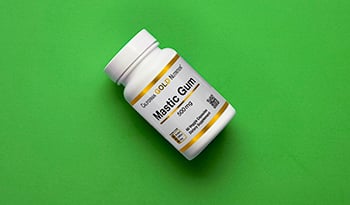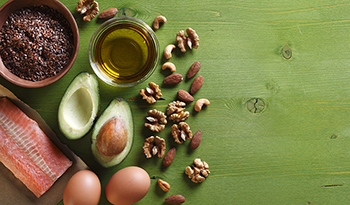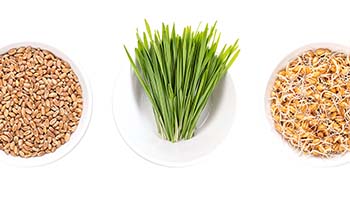Colostrum Benefits: The Ultimate Guide For Immunity, Gut Health + Skin

Key Takeaways
- Colostrum is the nutrient-dense fluid produced by mammals immediately after birth, loaded with antibodies (immunoglobulins), growth factors, and essential nutrients to jumpstart the immune system.
- Rich in IgG and lactoferrin, bovine colostrum helps fight bacteria and viruses.
- It helps repair the intestinal lining, making it a powerful remedy for "leaky gut," infectious diarrhea, and digestive damage.
- Due to its high content of Insulin-like Growth Factor 1 (IGF-1), colostrum supports muscle growth, improves recovery times, and helps prevent immune depletion caused by intense exercise.
What Is Colostrum?
Colostrum is the thick fluid produced by the breasts of humans and other mammals in the days before milk production sets in. It is the first nourishment of mammals. Colostrum provides the newborn mammal with high antibodies to fight off infections and critical nutrients such as protein, carbohydrates, fats, vitamins, and minerals.
Bovine colostrum is a dietary supplement from cows available in powder, capsule, or tablet form.
Over the past three decades, there has been a virtual explosion of research into the health benefits provided by bovine colostrum. Here are just some of the key actions of bovine colostrum supported by scientific research:1
- Support of immune function
- Antimicrobial properties
- Promotion of healthy gut flora and intestinal lining
- Antioxidant effects
Colostrum Health Benefits
Immune Support
One of the key components of colostrum is lactoferrin, an iron-binding protein with antimicrobial and immune-supporting properties.2 Bovine colostrum supplements can vary in lactoferrin concentration from 0.5 to 20%. Bovine colostrum products standardized to supply 20% lactoferrin are generally regarded as the highest quality products for immune support. Lactoferrin is also available as a dietary supplement from filtered milk.
Lactoferrin exerts antimicrobial action against a long list of microorganisms. However, more important than killing organisms is the recent discovery that lactoferrin prevents the attachment of microbes to human cells. This action is a nonspecific defense against infection. For example, lactoferrin inhibits viruses and other microbes from entering cells by blocking their ability to bind to cellular receptors on the surface of host cells. Lactoferrin has also shown an ability to suppress virus replication after a cell has become infected.2
There have been 16 controlled clinical studies where bovine lactoferrin was evaluated in upper respiratory tract infections (URTIs). Nine of these studies were grouped together in a meta-analysis to magnify the statistical significance of the effect of lactoferrin in RTIs.3 These nine studies represented the highest quality clinical studies available. The meta-analysis revealed significantly reduced odds of developing respiratory infections using bovine lactoferrin compared to the control group. Overall, the relative risk ratio was a 43% reduction in the risk of developing a cold.
Bovine colostrum has also helped prevent URTIs. In one double-blind study in healthy preschool children, bovine colostrum (first 15 days, 500 mg twice daily and then 500 mg daily for 30 days) reduced URTI symptoms by 37% over the 21-week trial.4 The supplementation period was six weeks, but the effects persisted for 15 weeks. Colostrum supplementation in preschool children was judged to be well-tolerated and safe. Bovine colostrum supplementation has also been confirmed to protect from URTIs in adults.5
In addition to lactoferrin, bovine colostrum provides additional bioactive compounds to support the immune system, such as naturally occurring antibodies, such as immunoglobulins G1 & G2 (IgG1, IgG2), as well as proline-rich peptides (PRP). Bovine colostrum also contains bovine versions of many human growth factors, including insulin-like growth factor, transforming growth factor, epithelial growth factor, and even growth hormone, capable of promoting muscle growth.
Bovine colostrum must be low-heat processed to preserve the biological activity of lactoferrin as well as the immunoglobulins and other proteins.
Gut Health
Bovine colostrum is a powerful growth promoter of health-promoting bacteria (probiotics) like Bifidobacteria and Lactobacillus species. By preventing the growth of harmful bacteria while promoting the growth of beneficial bifidobacteria, bovine colostrum assists in the development of a proper intestinal flora (microbiome).
Bovine colostrum can also help improve gut barrier function, or the "leaky gut." In one double-blind, placebo-controlled study, supplementation with 500 mg of bovine colostrum or placebo (whey) for 20 days showed that bovine colostrum reduced gut permeability and improved gut barrier status.6
Sports Nutrition
Although some studies have shown bovine colostrum may help improve physical performance or body composition, the dosages used were quite high (e.g., 20 grams per day). The balance of available evidence examining a range of doses over both short- and long-term periods does not support an effect in promoting improved physical performance.
Nonetheless, in the United States, the NCAA (National Collegiate Athletic Association) does not allow collegiate athletes to consume colostrum, and the World Anti-Doping Agency advises against it in those competing at the elite level.7
Strong evidence exists for bovine colostrum preventing the increase in gut permeability and oxidative damage associated with intense physical training.8,9 For example, bovine colostrum supplementation in highly trained females reduced the harmful effects of free radicals and oxidative stress from intense exercise. This antioxidant effect reduced the inflammatory response to intense exercise and improved iron metabolism. A study in older subjects also confirmed the antioxidant and anti-inflammatory actions of bovine colostrum.10
Side Effects + Safety Considerations
Bovine colostrum is generally well-tolerated by most adults and children, with a high safety profile observed in clinical trials. However, because it is a dairy product, individuals with a cow's milk protein allergy (such as an allergy to casein or whey) should avoid it to prevent allergic reactions. While colostrum typically contains lower levels of lactose than mature milk, those with severe lactose intolerance may still experience digestive distress and should exercise caution or choose lactose-free formulations.
The most commonly reported side effects are mild gastrointestinal disturbances, which often subside as the body adapts. These may include:
- Bloating and flatulence
- Nausea
- Diarrhea or loose stools
How to Use Colostrum Supplements in Your Diet
Many health experts prefer bovine colostrum as the source of lactoferrin versus the highly purified product because it contains additional bioactive components, including IgGs and proline-rich peptides. When using bovine colostrum, check the lactoferrin content and dose accordingly. For example, for a bovine colostrum with a lactoferrin content of 20%, the dosage would correspond to 500 to 1,000 mg of bovine colostrum one to three times daily.
One of the most convenient ways to include bovine colostrum in your diet is by using a powder such as California Gold Nutrition Colostrum.
Here are some popular ways to add it to meals and snacks:
- Mix it into a liquid of your choice, such as milk, hot chocolate, or coffee. When using milk, you can pour it over granola or cereal.
- Mix it into creamy salad dressings, mayonnaise, or nut butter.
- Add to smoothies.
- Place one to two scoops in waffle or pancake mix.
References:
- Ghosh S, Iacucci M. Diverse Immune Effects of Bovine Colostrum and Benefits in Human Health and Disease. Nutrients. 2021;13(11):3798.
- Kell DB, Heyden EL, Pretorius E. The Biology of Lactoferrin, an Iron-Binding Protein That Can Help Defend Against Viruses and Bacteria. Front Immunol. 2020;11:1221.
- Ali AS, Hasan SS, Kow CS, Merchant HA. Lactoferrin reduces the risk of respiratory tract infections: A meta-analysis of randomized controlled trials. Clin Nutr ESPEN. 2021;45:26-32. doi:10.1016/j.clnesp.2021.08.019
- Hałasa M, Skonieczna-Żydecka K, Machaliński B, et al. Six Weeks of Supplementation with Bovine Colostrum Effectively Reduces URTIs Symptoms Frequency and Gravity for Up to 20 Weeks in Pre-School Children. Nutrients. 2023 Aug 18;15(16):3626. doi: 10.3390/nu15163626. PMID: 37630816; PMCID: PMC10459079.
- Baśkiewicz-Hałasa M, Stachowska E, Grochans E, Maciejewska-Markiewicz D, Bühner L, Skonieczna-Żydecka K, Hałasa M. Moderate Dose Bovine Colostrum Supplementation in Prevention of Upper Respiratory Tract Infections in Medical University Students: A Randomized, Triple Blind, Placebo-Controlled Trial. Nutrients. 2023 Apr 16;15(8):1925.
- Hałasa M, Maciejewska D, Baśkiewicz-Hałasa M, Machaliński B, Safranow K, Stachowska E. Oral Supplementation with Bovine Colostrum Decreases Intestinal Permeability and Stool Concentrations of Zonulin in Athletes. Nutrients. 2017 Apr 8;9(4):370.
- Davison G. The Use of Bovine Colostrum in Sport and Exercise. Nutrients. 2021 May 24;13(6):1789
- Dziewiecka H, Buttar HS, Kasperska A, Ostapiuk-Karolczuk J, Domagalska M, Cichoń J, Skarpańska-Stejnborn A. A Systematic Review of the Influence of Bovine Colostrum Supplementation on Leaky Gut Syndrome in Athletes: Diagnostic Biomarkers and Future Directions. Nutrients. 2022 Jun 17;14(12):2512
- Cieślicka M, Ostapiuk-Karolczuk J, Buttar HS, Dziewiecka H, Kasperska A, Skarpańska-Stejnborn A. Effects of Long-Term Supplementation of Bovine Colostrum on Iron Homeostasis, Oxidative Stress, and Inflammation in Female Athletes: A Placebo-Controlled Clinical Trial. Nutrients. 2022 Dec 30;15(1):186.
- Ooi TC, Ahmad A, Rajab NF, Sharif R. The Effects of 12 Weeks Colostrum Milk Supplementation on the Expression Levels of Pro-Inflammatory Mediators and Metabolic Changes among Older Adults: Findings from the Biomarkers and Untargeted Metabolomic Analysis. Nutrients. 2023 Jul 18;15(14):3184.
- Ooi TC, Ahmad A, Rajab NF, Sharif R. The Effects of 12 Weeks Colostrum Milk Supplementation on the Expression Levels of Pro-Inflammatory Mediators and Metabolic Changes among Older Adults: Findings from the Biomarkers and Untargeted Metabolomic Analysis. Nutrients. 2023 Jul 18;15(14):3184. doi: 10.3390/nu15143184. PMID: 37513601; PMCID: PMC10384749.
DISCLAIMER:This Wellness Hub does not intend to provide diagnosis...













































































 Table of Contents
Table of Contents
















